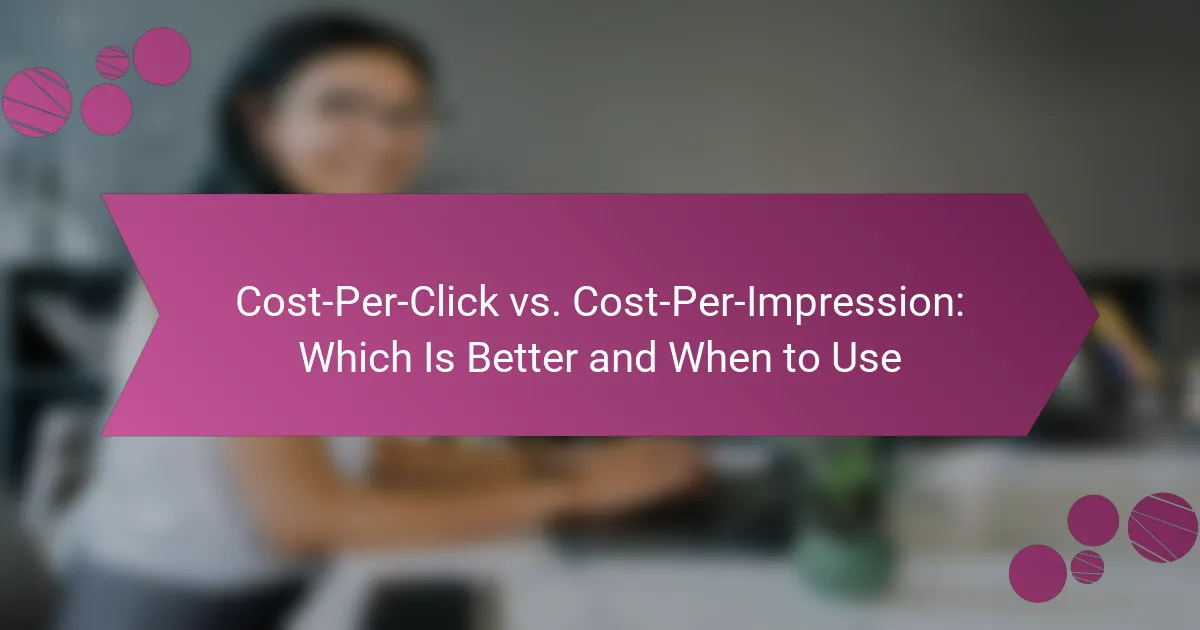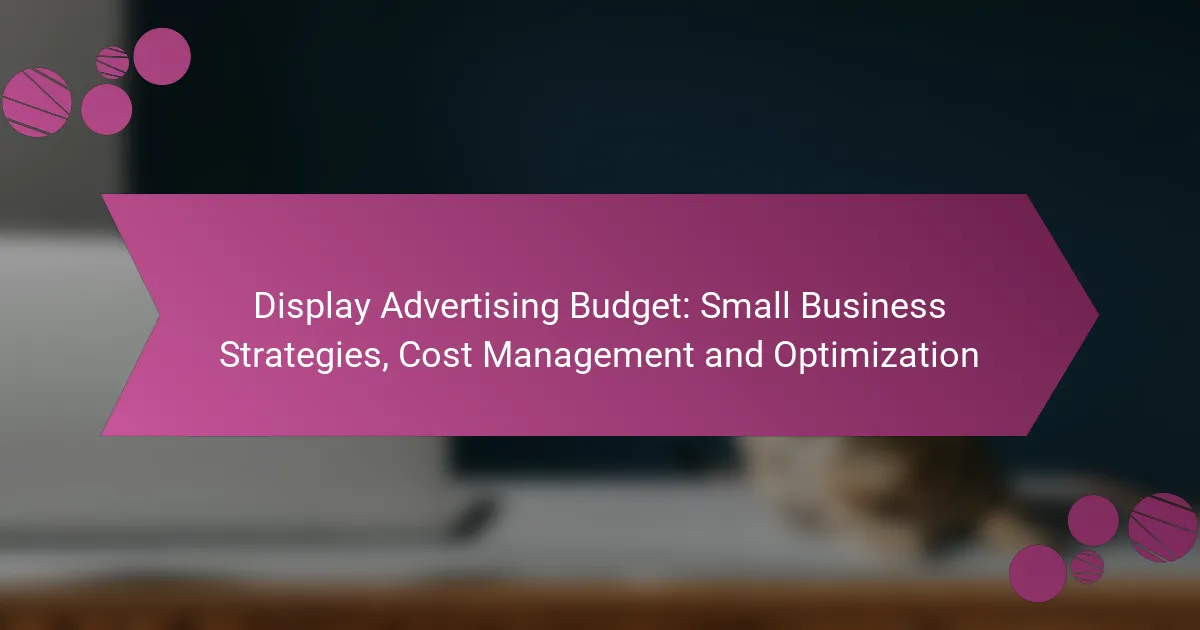CPC (Cost Per Click) and CPM (Cost Per Mille) are essential pricing models in display advertising, each catering to distinct campaign objectives. While CPC charges advertisers for every click on their ads, CPM focuses on the cost for every thousand impressions, influencing how budgets are allocated based on desired outcomes. Understanding the differences between these models is crucial for optimizing advertising strategies and achieving specific marketing goals.
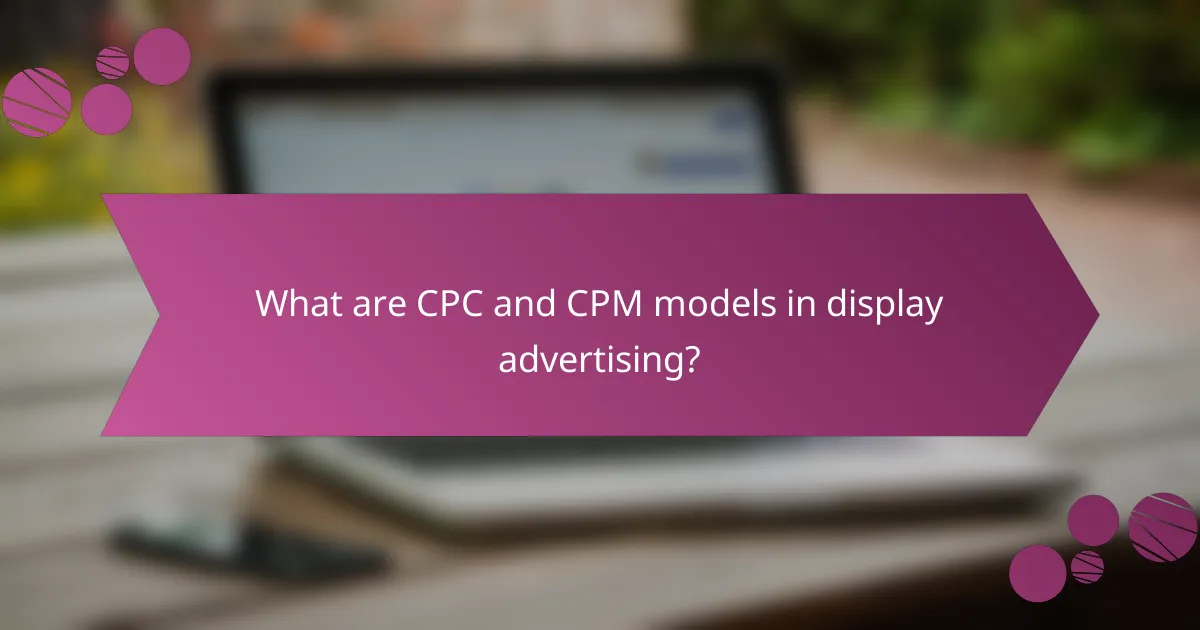
What are CPC and CPM models in display advertising?
CPC (Cost Per Click) and CPM (Cost Per Mille) are two primary pricing models used in display advertising. CPC charges advertisers for each click on their ad, while CPM charges for every thousand impressions, making them suitable for different advertising goals.
CPC (Cost Per Click) model
The CPC model focuses on driving traffic to a website by charging advertisers only when a user clicks on their ad. This model is ideal for campaigns aimed at generating leads or sales, as it directly correlates costs to user engagement.
Advertisers typically set a maximum bid for how much they are willing to pay per click. Depending on competition and ad quality, actual costs may vary, often ranging from a few cents to several dollars per click.
CPM (Cost Per Mille) model
The CPM model charges advertisers based on the number of impressions their ads receive, specifically for every thousand views. This approach is beneficial for brand awareness campaigns, where the goal is to reach a large audience rather than drive immediate clicks.
CPM rates can vary significantly based on factors like ad placement, audience targeting, and the overall demand for ad space. Typical CPM costs can range from a few euros to over ten euros, depending on these variables.
Key differences between CPC and CPM
The primary difference between CPC and CPM lies in how advertisers are charged. CPC is performance-based, focusing on user interaction, while CPM is impression-based, emphasizing visibility. This distinction affects budgeting strategies and campaign objectives.
When choosing between the two models, consider your campaign goals. If you aim for immediate actions like clicks or conversions, CPC is preferable. Conversely, for brand exposure and awareness, CPM is more suitable. Understanding these differences helps in optimizing ad spend effectively.

How do CPC and CPM models impact budgeting in Ireland?
CPC (Cost Per Click) and CPM (Cost Per Mille) models significantly influence budgeting strategies for digital advertising in Ireland. CPC focuses on paying for each click on an ad, while CPM charges for every thousand impressions, affecting how advertisers allocate their budgets based on campaign goals and expected outcomes.
Budgeting for CPC campaigns
When budgeting for CPC campaigns, it’s crucial to estimate the cost per click based on historical data and industry benchmarks. In Ireland, CPC rates can vary widely, typically ranging from a few cents to several euros, depending on the competitiveness of the keywords targeted.
To effectively manage your budget, set a maximum bid for each click and monitor performance closely. Adjust your bids based on the return on investment (ROI) to ensure you are not overspending while maximizing traffic to your site.
Budgeting for CPM campaigns
For CPM campaigns, budgeting involves calculating the cost for every thousand impressions your ad receives. In Ireland, CPM rates can range from a few euros to over twenty euros, influenced by factors such as the ad placement and audience targeting.
To optimize your CPM budget, focus on selecting high-quality placements that reach your target audience effectively. Regularly review engagement metrics to ensure that your spending aligns with your campaign objectives and adjust your strategy as needed.
Cost-effectiveness comparison
Comparing CPC and CPM models in terms of cost-effectiveness depends on your campaign goals. CPC is often more suitable for direct response campaigns where immediate actions, like clicks or conversions, are desired. In contrast, CPM can be more effective for brand awareness campaigns aiming to reach a larger audience.
Consider your objectives: if driving traffic is the priority, CPC may yield better results. However, if the goal is to maximize visibility, CPM could be the more economical choice. Regularly analyze the performance of both models to determine which aligns best with your overall marketing strategy and budget constraints.

When should you use CPC vs. CPM in display advertising?
Choosing between CPC (Cost Per Click) and CPM (Cost Per Mille) in display advertising depends on your campaign goals. If your focus is on driving traffic and conversions, CPC is preferable, while CPM is better suited for brand awareness and visibility.
Best use cases for CPC
CPC is ideal for campaigns aimed at generating immediate responses, such as clicks to a landing page or sign-ups. This model works well for e-commerce businesses looking to drive sales directly from ads.
For example, if you are promoting a limited-time offer, using CPC can help you maximize clicks during that promotional period. It’s also effective for campaigns targeting specific keywords or audiences that are likely to convert.
Best use cases for CPM
CPM is best for campaigns focused on brand awareness and exposure rather than immediate clicks. This model is suitable for businesses looking to reach a large audience and build brand recognition over time.
For instance, if you are launching a new product and want to ensure that as many people as possible see your ads, CPM can provide a cost-effective way to achieve high visibility. It’s also beneficial for campaigns that rely on impressions, such as those in the entertainment or fashion industries.
Factors influencing model choice
Several factors can influence whether to choose CPC or CPM. Consider your campaign objectives, target audience, and the nature of your product or service. If your goal is to drive traffic, CPC may be more effective, while CPM might be better for building brand presence.
Additionally, budget constraints play a crucial role. CPC can lead to variable costs depending on click rates, while CPM offers more predictable budgeting based on impressions. Assessing these factors will help you make an informed decision on the most suitable model for your advertising needs.
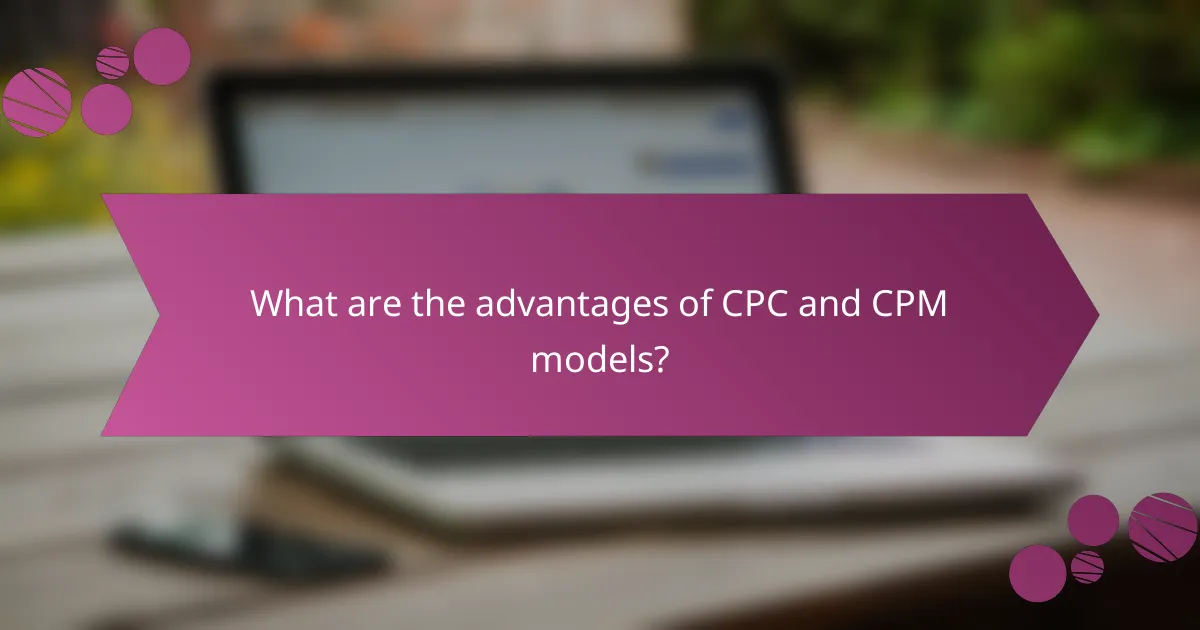
What are the advantages of CPC and CPM models?
CPC (Cost Per Click) and CPM (Cost Per Mille) models each offer distinct advantages for advertisers. CPC focuses on driving traffic by charging only when users click on ads, while CPM emphasizes brand visibility by charging per thousand impressions, making each model suitable for different marketing goals.
Advantages of CPC model
The CPC model is particularly beneficial for advertisers aiming to maximize traffic and conversions. Since costs are incurred only when users click on ads, it allows for more precise budgeting and performance tracking. This model is ideal for campaigns focused on direct response, such as lead generation or sales.
Additionally, CPC campaigns can be optimized in real-time based on performance data, enabling advertisers to adjust bids and targeting strategies to improve results. This flexibility can lead to a higher return on investment (ROI) when executed effectively.
Advantages of CPM model
The CPM model excels in building brand awareness and visibility. By charging per thousand impressions, advertisers can reach a broader audience without needing immediate clicks. This is especially useful for campaigns aimed at increasing brand recognition or launching new products.
Moreover, CPM can be more cost-effective for advertisers with a strong focus on impressions rather than direct actions. It allows for extensive reach across various platforms, making it suitable for campaigns that prioritize exposure over immediate engagement.
Performance metrics for both models
When evaluating CPC campaigns, key performance metrics include click-through rate (CTR), conversion rate, and cost per conversion. These metrics help determine the effectiveness of the campaign in driving traffic and achieving specific goals.
For CPM campaigns, important metrics include impression share, reach, and frequency. These indicators provide insight into how well the ads are being displayed and the overall visibility of the brand. Understanding these metrics is crucial for optimizing both CPC and CPM strategies to align with marketing objectives.
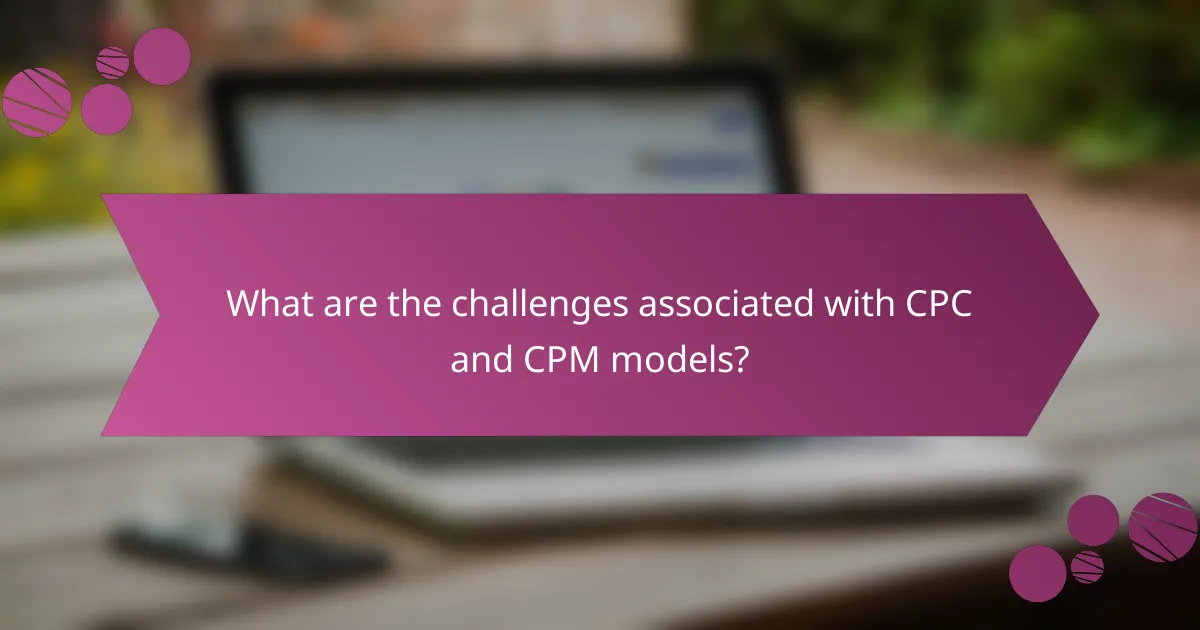
What are the challenges associated with CPC and CPM models?
CPC (Cost Per Click) and CPM (Cost Per Mille) models each present unique challenges that can impact campaign effectiveness and budgeting. Understanding these challenges is crucial for optimizing ad spend and achieving desired outcomes.
Challenges of CPC campaigns
CPC campaigns can lead to high costs if click-through rates are low, as advertisers pay for each click regardless of conversion. This can result in wasted budget if the traffic does not convert into sales or leads.
Additionally, competition for keywords can drive up CPC rates, making it essential to conduct thorough keyword research and continuously optimize ad copy and landing pages to improve quality scores.
Challenges of CPM campaigns
CPM campaigns focus on impressions rather than clicks, which can lead to low engagement rates if the ads are not targeted effectively. Advertisers may pay for impressions that do not result in any user interaction, reducing overall ROI.
Moreover, measuring the effectiveness of CPM campaigns can be challenging, as success is often gauged by brand awareness rather than direct response metrics. This requires careful tracking of brand lift studies or other indirect measures.
Strategies to overcome challenges
To mitigate CPC challenges, advertisers should focus on optimizing their ad targeting and improving landing page experiences to increase conversion rates. Regularly analyzing performance data can help identify underperforming keywords and adjust bids accordingly.
For CPM campaigns, utilizing advanced targeting options and A/B testing different ad creatives can enhance engagement. Additionally, employing analytics tools to assess brand awareness and user behavior can provide insights into campaign effectiveness.
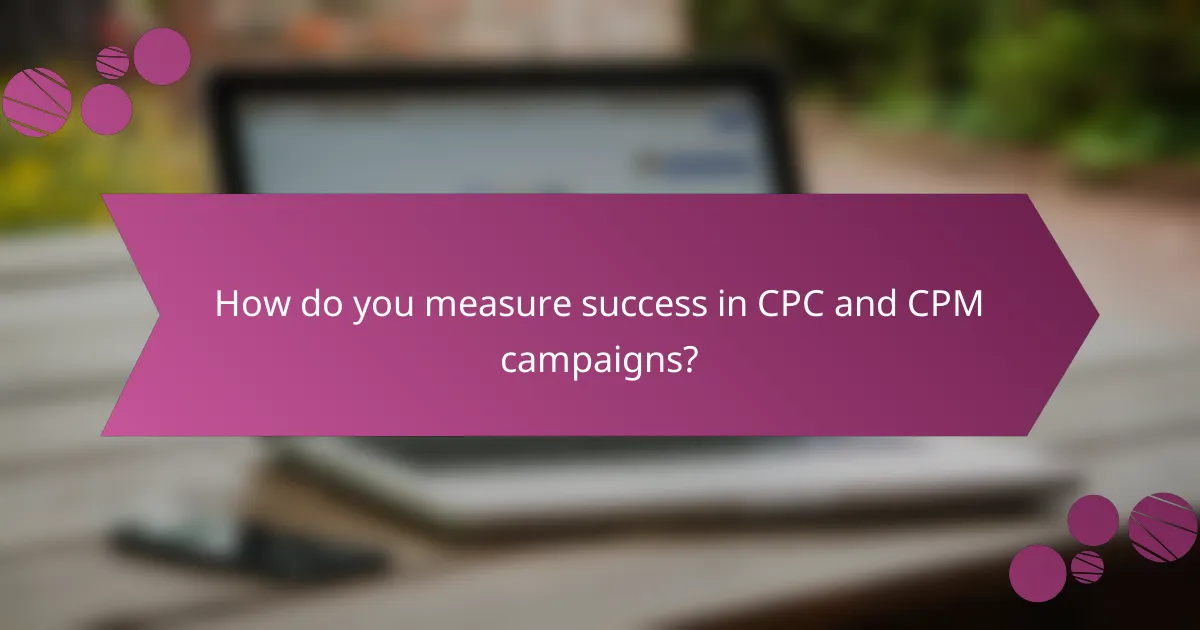
How do you measure success in CPC and CPM campaigns?
Success in CPC (Cost Per Click) and CPM (Cost Per Mille) campaigns is measured through specific performance metrics that indicate how effectively an ad is achieving its goals. Key metrics include click-through rates, conversion rates, and overall return on investment, which help advertisers assess the efficiency of their spending.
Key performance indicators for CPC
For CPC campaigns, the primary performance indicators include click-through rate (CTR), cost per acquisition (CPA), and conversion rate. A higher CTR indicates that the ad is engaging and relevant to the audience, while a lower CPA suggests effective targeting and ad spend.
Monitoring these metrics allows advertisers to optimize their campaigns. For example, if a campaign has a high CTR but a low conversion rate, it may indicate that the landing page needs improvement. Regularly analyzing these KPIs helps in making informed adjustments to maximize campaign effectiveness.
Key performance indicators for CPM
In CPM campaigns, the focus shifts to impressions, reach, and frequency. Impressions measure how many times an ad is displayed, while reach indicates the number of unique users who see the ad. Frequency refers to how often the same user sees the ad, which can impact brand recall.
Advertisers should aim for a balance between reach and frequency to avoid ad fatigue. For instance, a campaign with a high frequency but low reach may lead to diminishing returns. Evaluating these indicators helps in determining the overall visibility and impact of the advertising efforts.







